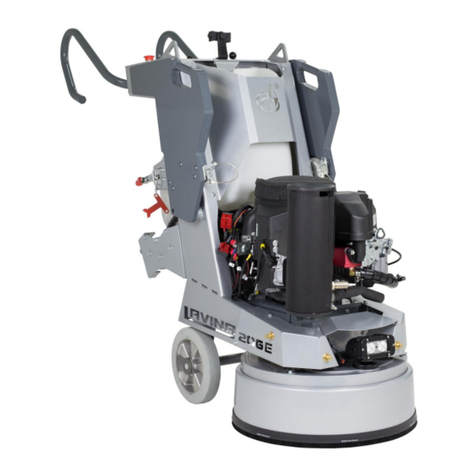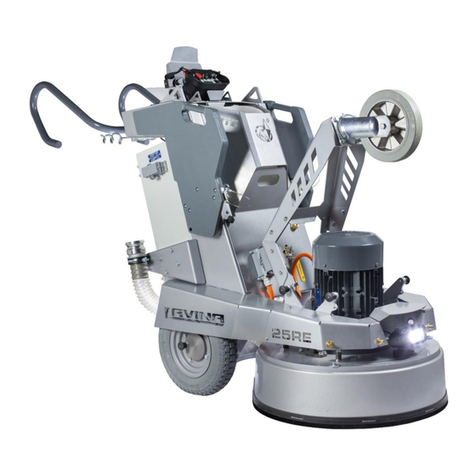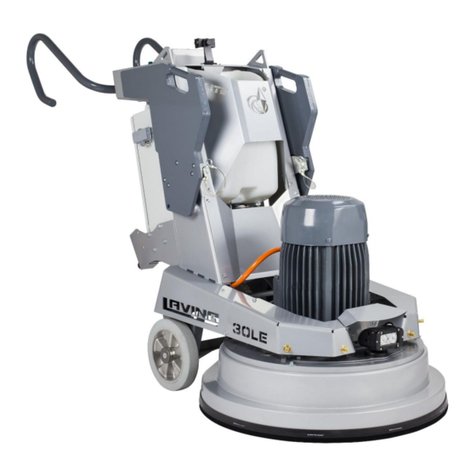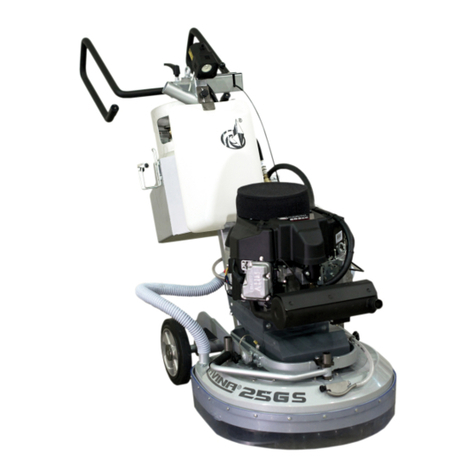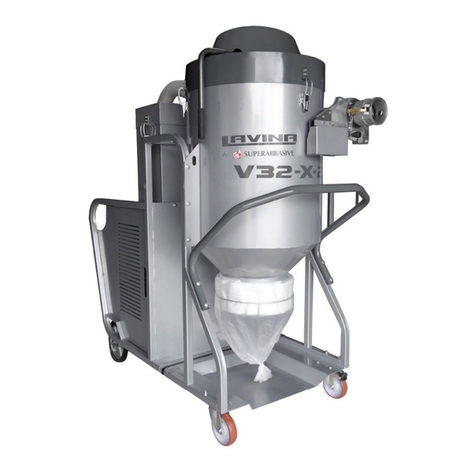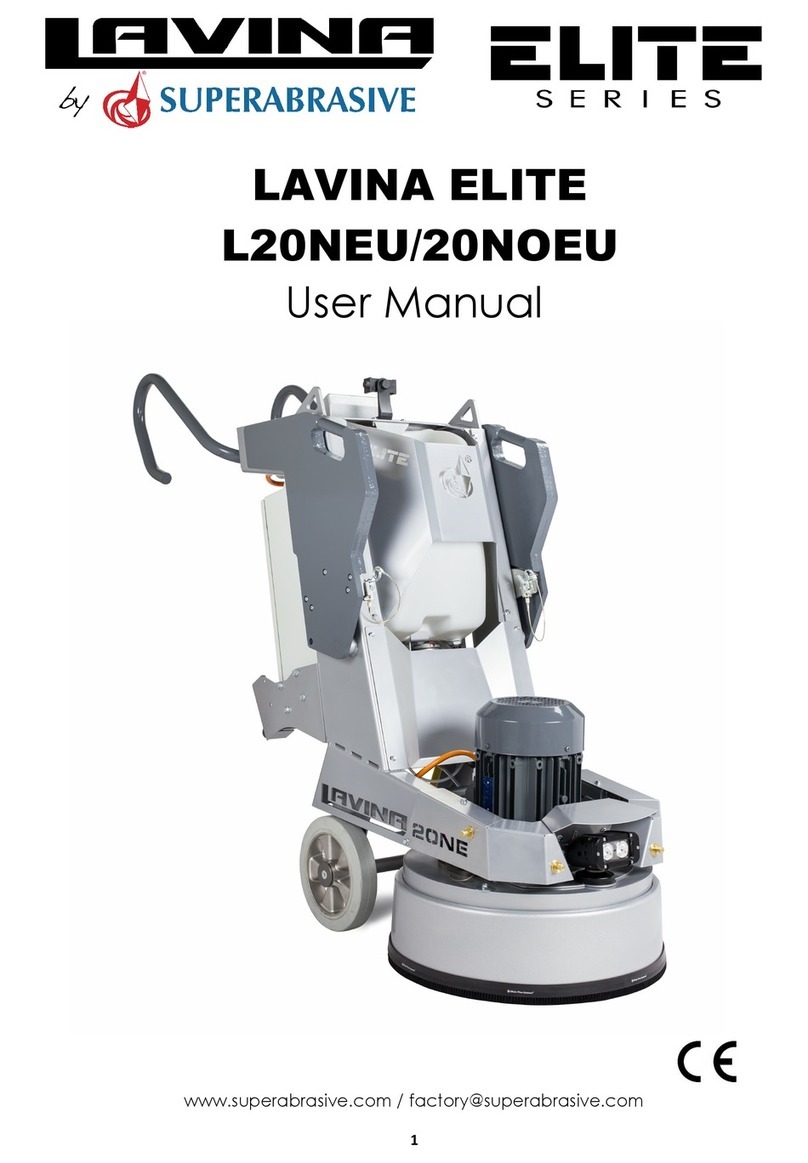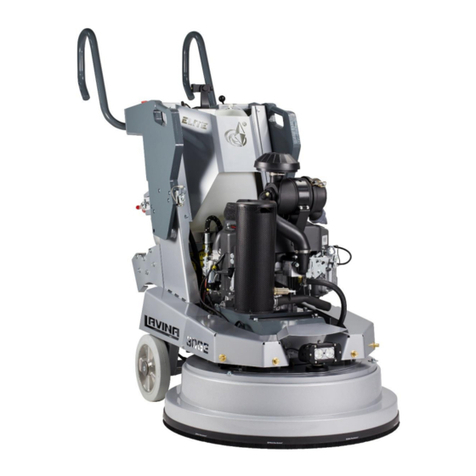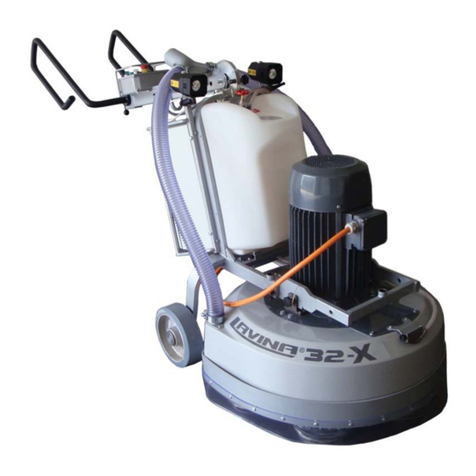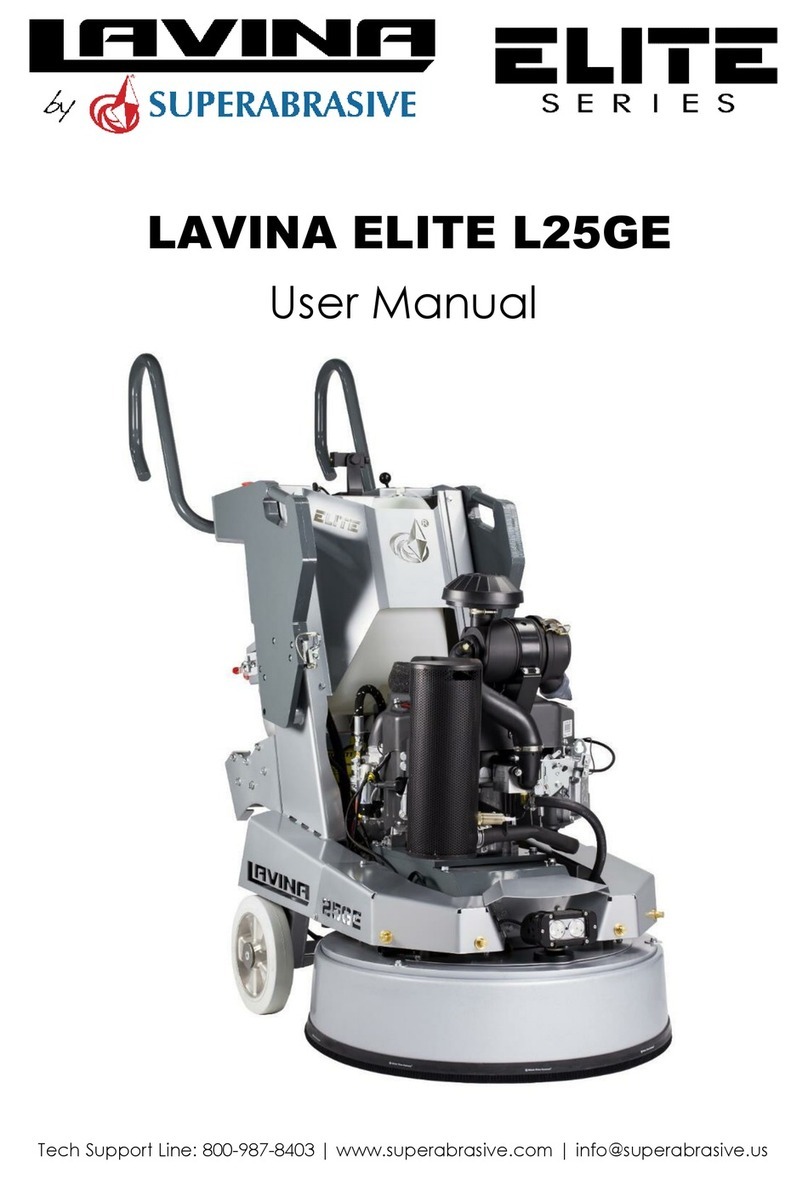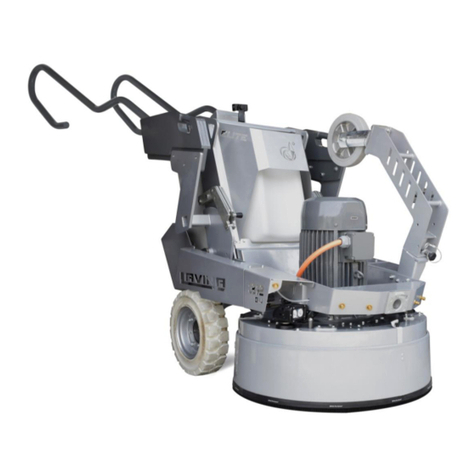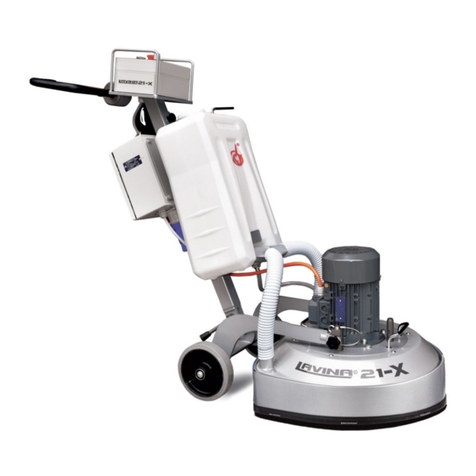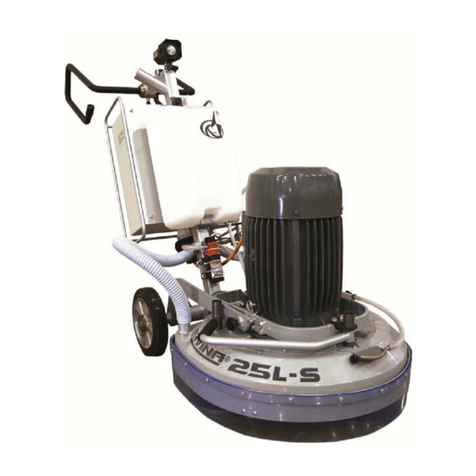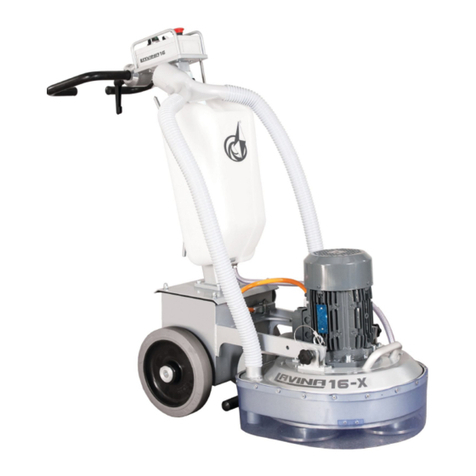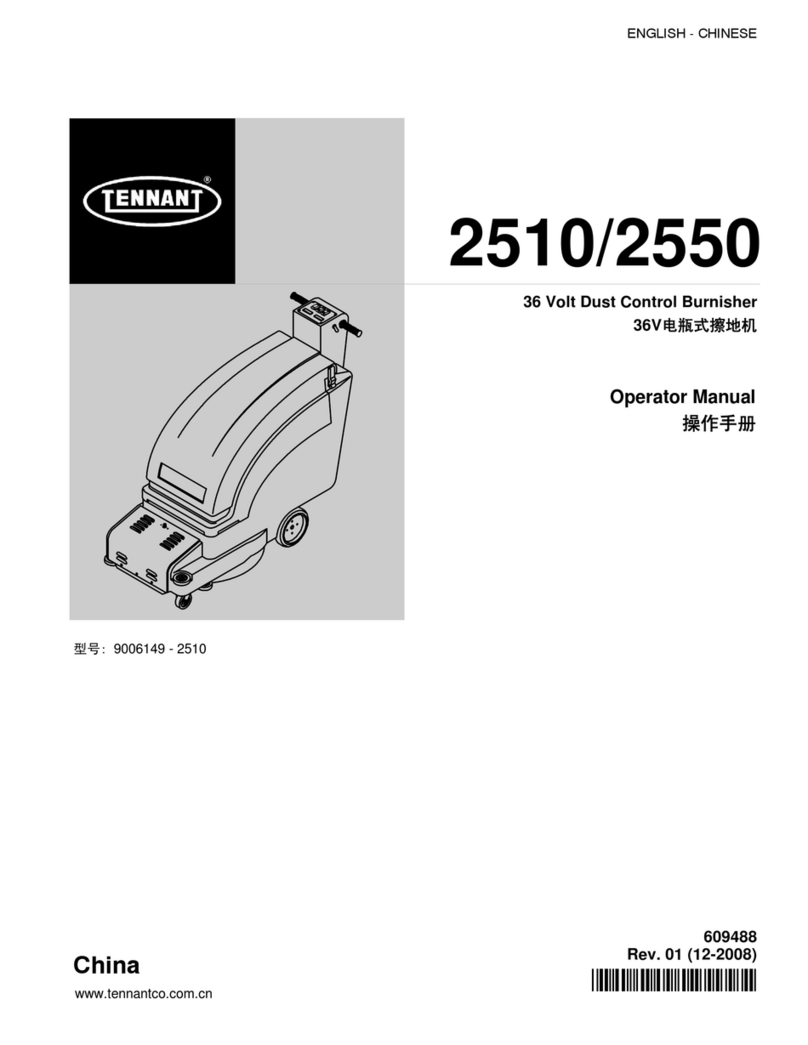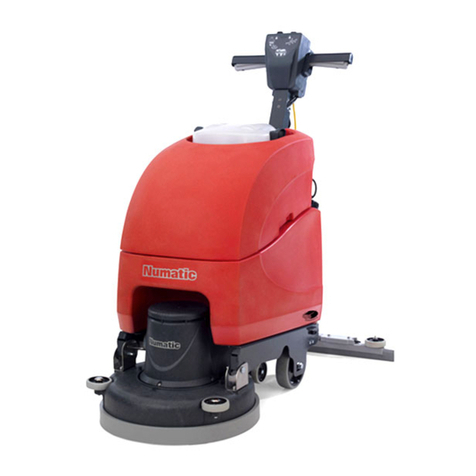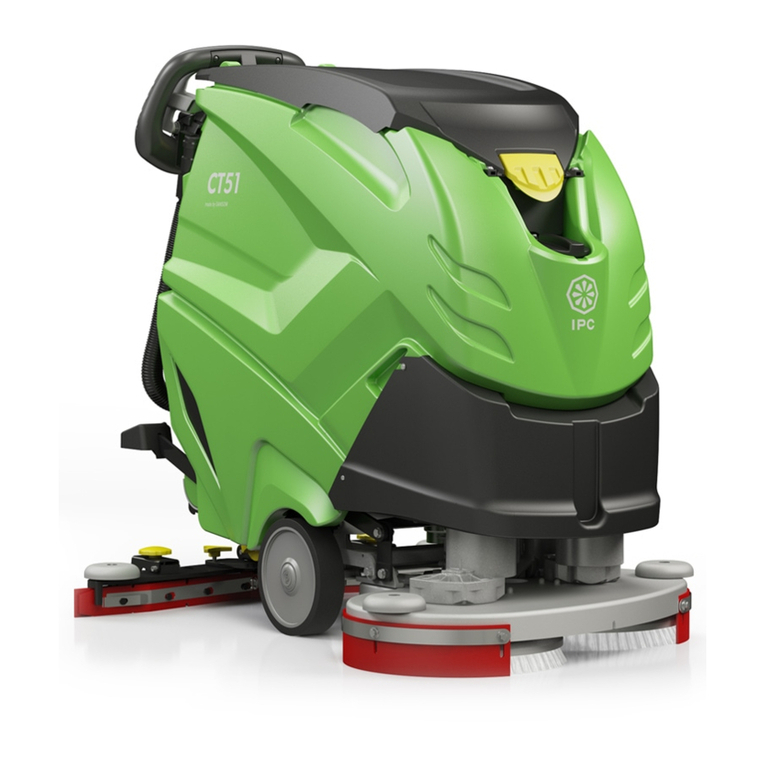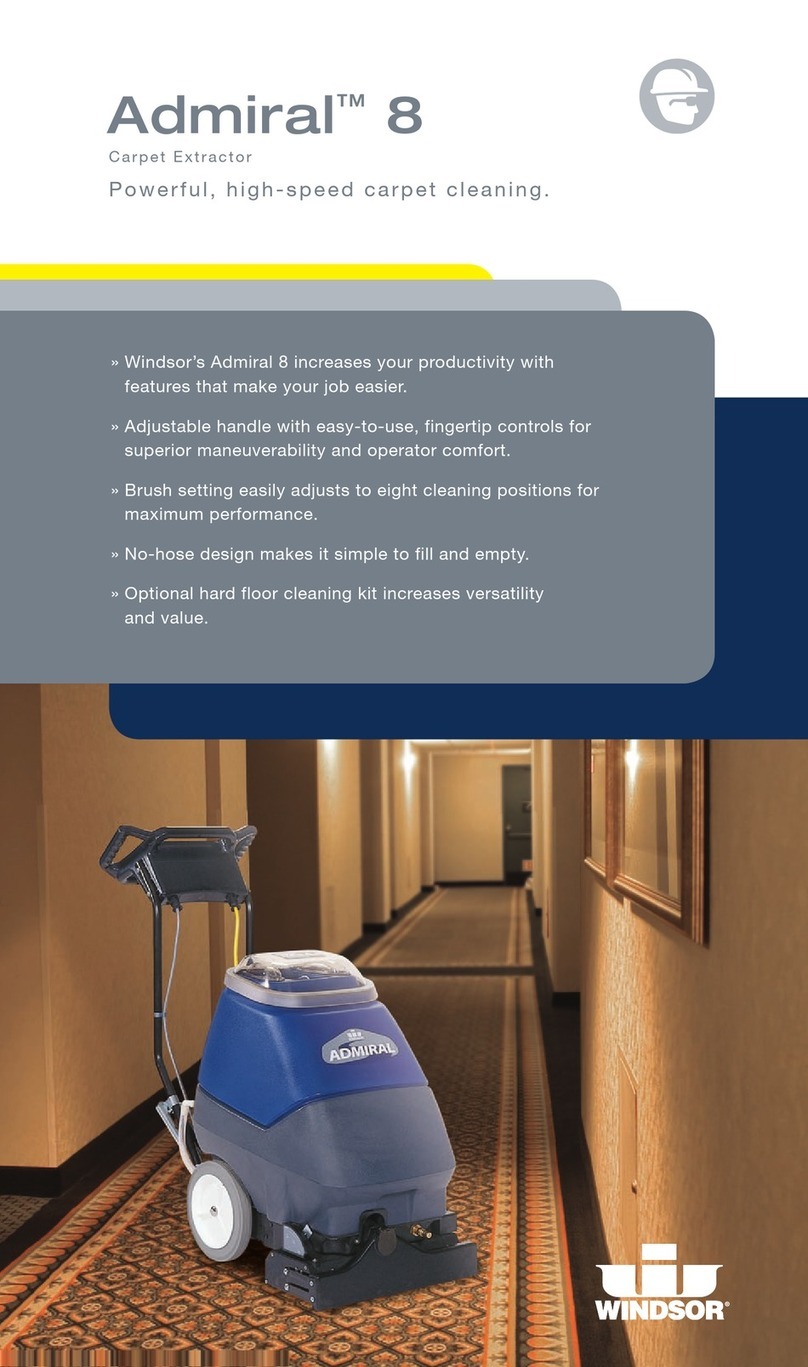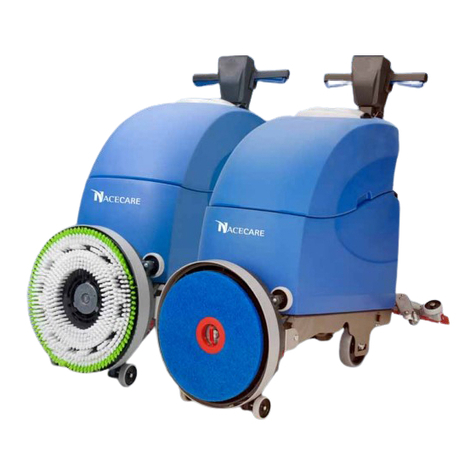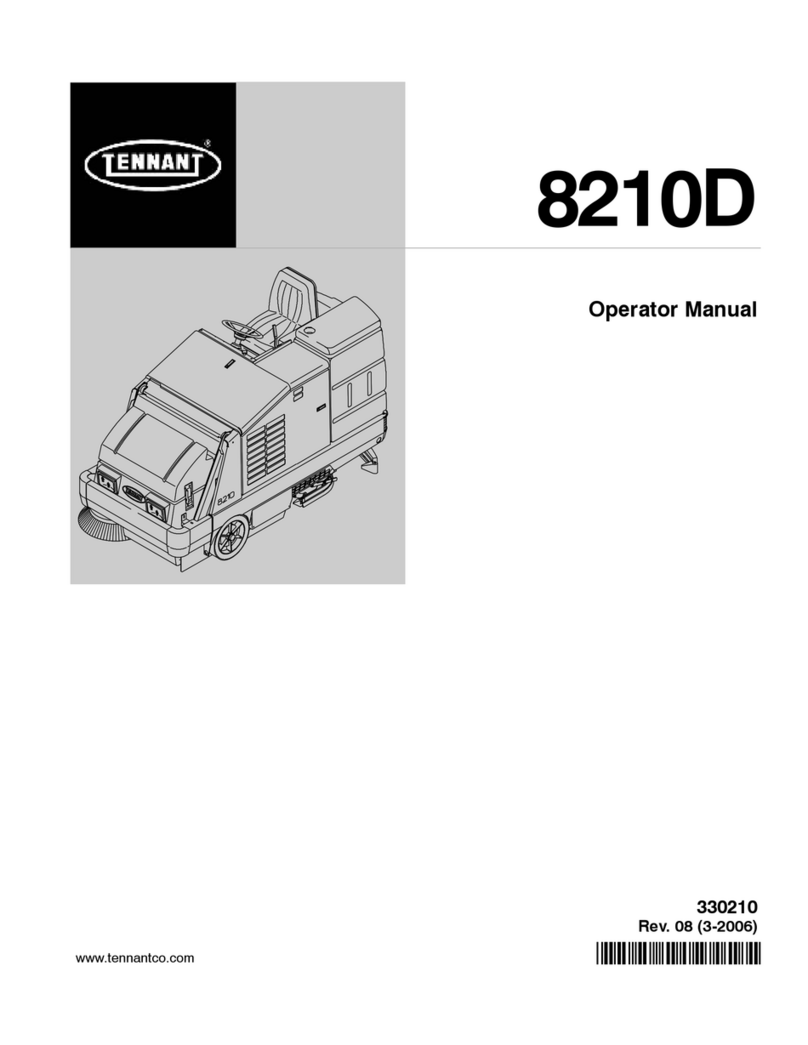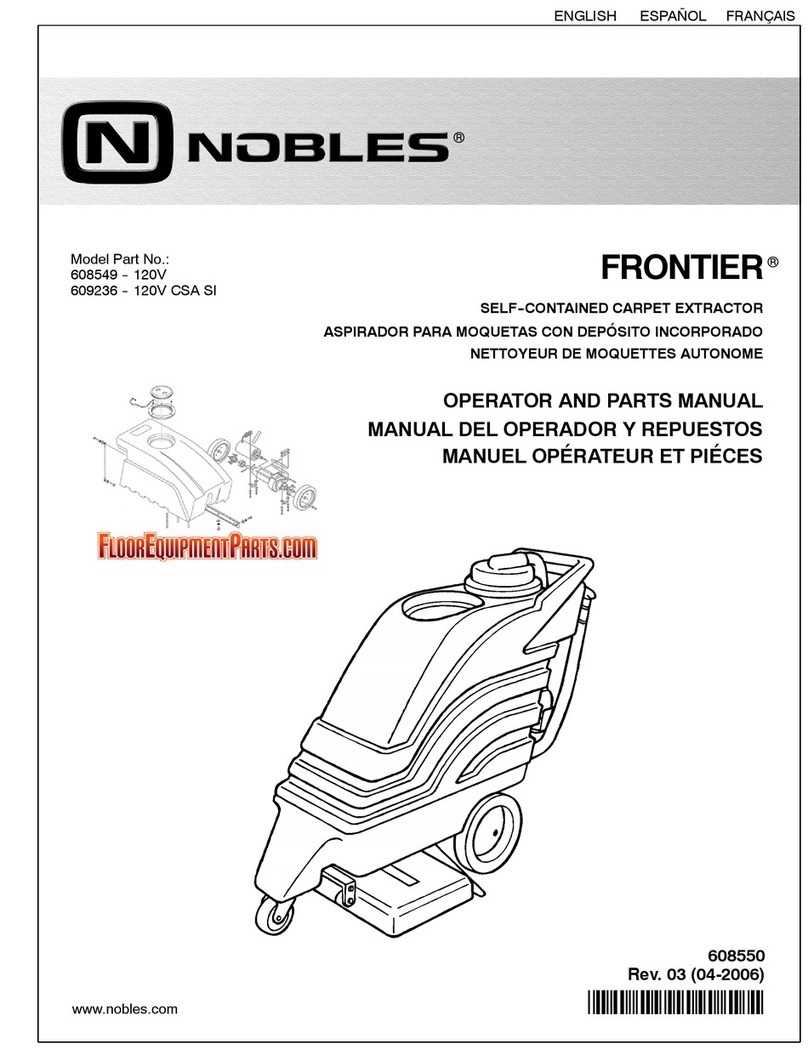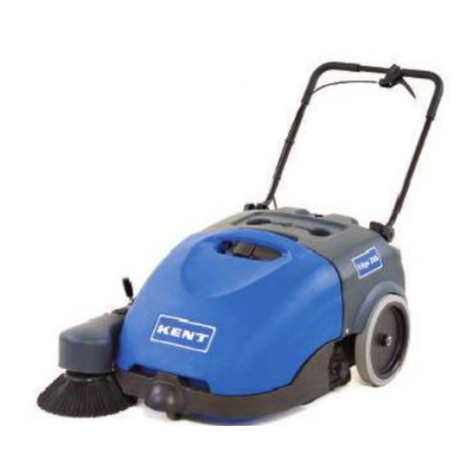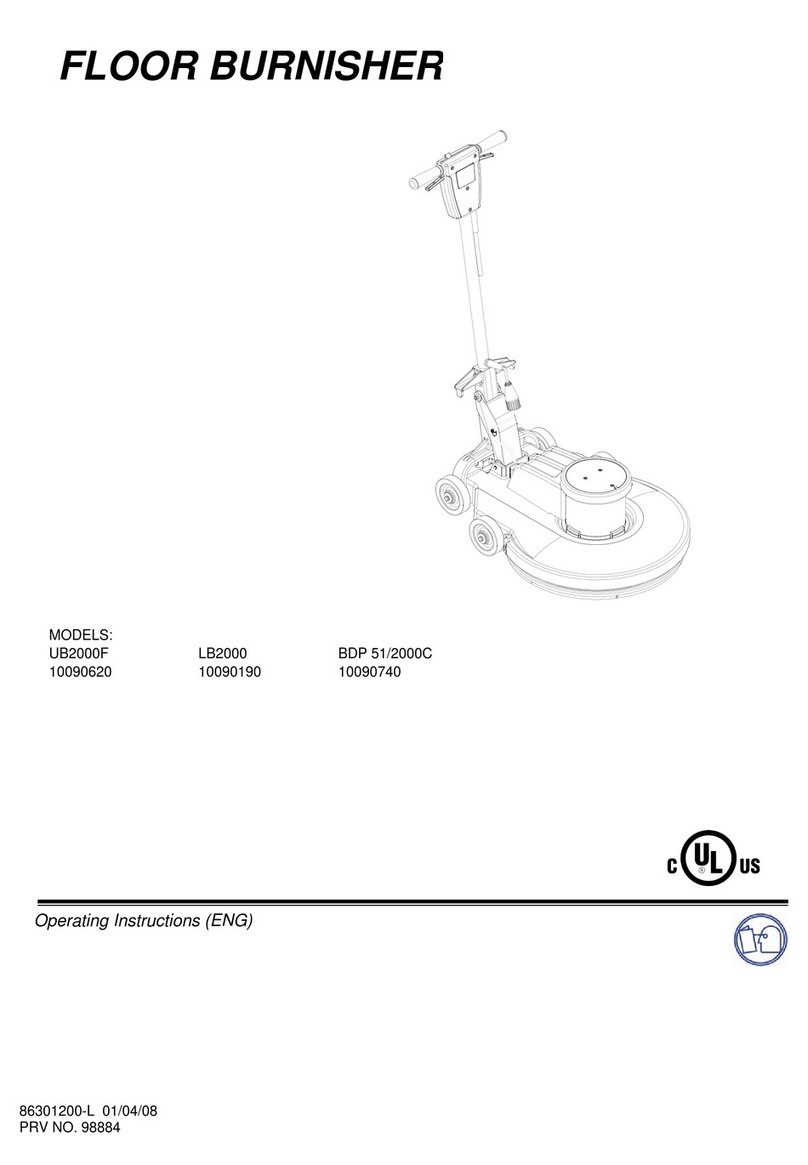
Superabrasive UserManual OriginalLanguageLavina®30G‐S 8/2014
8
5.Havethemachineandcylinderinspectedbefore
using
them
again
LOCALAGENCIESANDREGULATIONS
NFPA
Operatingapropanepowered
floorcaremachine
requires
compliancewithcertainsafety
regulations.TheNational
Fire
ProtectionAgency(NFPA)
StandardforStorageand
Handling
ofLPGasistheappropriate
authorityforsafepropaneuse.
A
copyofthispublicationis
availablethroughtheNPFA
in
Quincy,MA
(1‐800‐334‐3555).
Amongitsregulations,NFPA#58requiresthatall
personnel
employedinthehandlingofpropanegasbetrainedin
its
proper
handlingandoperatingprocedures.Italso
requires
themto
carryawrittencertificationfromtheiremployer
or
training
supervisortoattesttosuchtraining.Althoughthis
is
directed
mainlytothosewhofillandtransportliquid
propane
gas,Onyx
EnvironmentalSolutionsrecommends
that
operatorsofpropane
poweredfloorcaremachinesin
public
placesbetrainedand
certifiedas
well.
Withregardtooperationofpropanepoweredfloor
care
equipment,eventhoughNFPA588‐4.5says“these
machines
shallbepermittedtobeusedinbuildingsfrequentedby
the
public,includingthetimeswhensuchbuildingsare
occupied
by
thepublic,”OnyxEnvironmentalSolutionssuggests
usage
when
occupancyofagivenworkareais
minimal.
CARB/EPA
TheCaliforniaAirResourceBoard(CARB)and
Environmental
ProtectionAgency(EPA)alsosetlimitsfor
propane‐powered
enginesusedoutdoors,butCARB/EPAapprovaldoes
not
signify
thattheengineissafetouse
indoors.
CGA
TheCanadianGasAssociation(CGA)hassetalimitof
1500
ppmCOinexhaust
flow.
OSHA
Forpropanepoweredmachinesusedindoors,
the
Occupational
HealthandSafetyAdministration(OSHA)
has
establishedalimit
of50ppmCOfor8‐hourtime
weighted
average(TWA)in
ambientairandisconsideringalimitof
800
ppmCOinexhaust
flow.
DOT
TheDepartmentofTransportation(DOT)has
established
regulationsregardingthesafetyoffuelcylindersincluding
the
onesusedonpropanepoweredfloorcare
machines.
LocalAgencies
LocallawenforcementagenciessuchasthelocalFire
Marshall
alsorelyonindependenttestinglabssuchasULand
CGA
before
givingtheirapprovaloftheuseofsome
equipment.
Theselabs
thoroughlytestequipmentandsubmittheir
stamp
ofapproval
onlyafterrigoroustesting.Whilenot
being
requiredbyalllaw
enforcementagencies,thestamp
of
approvalbytheseagencies
furtherassurestheoperator
thathe
orsheisworkingwithand
aroundsafe
equipment.
NOTE:Inordertoreduceallconsequencesofthe
above‐
mentionedrisks,weadvisethatmachineoperatorswill
follow
theinstructionsinthemanualatall
times.
RESIDUALRISKS
Duringthenormaloperatingandmaintenancecycles,
the
operatorisexposedtofewresidualrisks,whichcannot
be
eliminatedduetothenatureofthe
operations.
BEFOREYOUBEGIN
Workingareamustbeclearfromanydebrisor
objects.
Afirst‐timeoperatormustalwaysreadthemanualand
pay
attentiontoallsafety
instructions.
Allpropaneconnectionsandcablesmustbeinspected
for
potential
damages.
Performgeneraldailyinspectionsofthemachine
and
inspectthemachinebeforeeach
use.
Alwaysinspectthesafety
devices:
Thetoolprotectormustbe
working
Mountthesecuritydiscwhenworkingwith
Quickchange
Pads.
Themachinemustbe
clean
Neveroperatethemachineinthe
rain!
Confirmthattherearenomissingpartsespecially
after
transportation,repairor
maintenance.
Beforefillingthewatertankwithwatermakesure
the
machineisnotworkingandthemainswitchisturned
off.
Beforeturningonthemachinemakesurethatthebase
is
placedonthefloor,themachineMUSTNOTbein
an
upright
positionwhenturned
on!
OPERATINGMACHINE
WhenoperatingtheLavina®25G‐S,makecertain
that
thereisnoone,butyouaroundthe
machine.
Neverleavethemachineunattendedwhile
working.
Thewaterhosemustmovefreelyandmustbe
damage‐
free.
Checkifthefloor,youworkon,isnottoouneven.Ifthis
is
the
case,itmaydamagethe
machine.
AFTERWORKISCOMPLETED
Cleanthemachineandits
surroundings
properly
Emptyandcleanthewater
tank
Storethemachineinasafe
place
PlacethePropanebottleoutsideinits
storage
THEWORKAREA
Makecertainthatpeopleorvehiclesdonotenterthe
work
area.
Avoidcablesandhosesbeinginthe
way.
Alwayscheckthefloorfor
debris
PERSONALPROTECTIVEEQUIPMENT
(PPE)
Alwayswearsafetyshoeswhenworkingwiththe
machine.
Alwayswearearprotectorswhenworkingwith
the
machine.
Allpersonnelintheimmediateworkareamustwear
safety
glasseswithside
shields.
Alwayswearsafetygloveswhenchangingthe
tools.
Alwayswearclothessuitableforthework
environment.
AlwayswearCarbonMonoxideIndicatorbadgesas
an
extra
precaution.
Theplasticindicatorcontainsacoloredindicator
button
thatdarkensinthepresenceofCarbonMonoxide.
The
relativedarknessoftheindicatorbuttonindicates
the
levelofCO
intheambientatmosphere.Most
indicator
badgeshaveauseful
